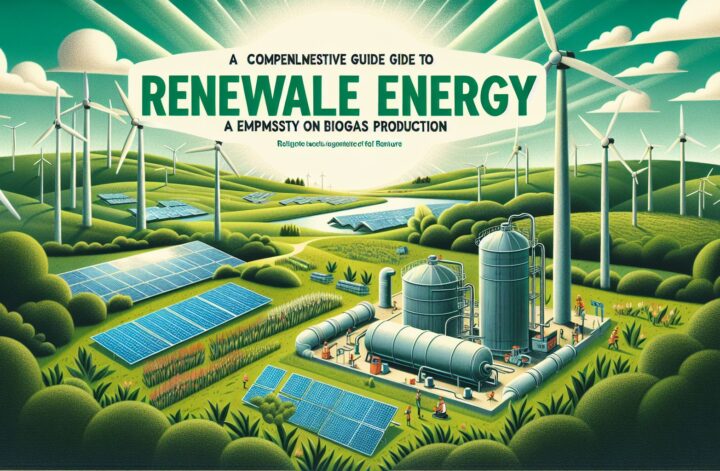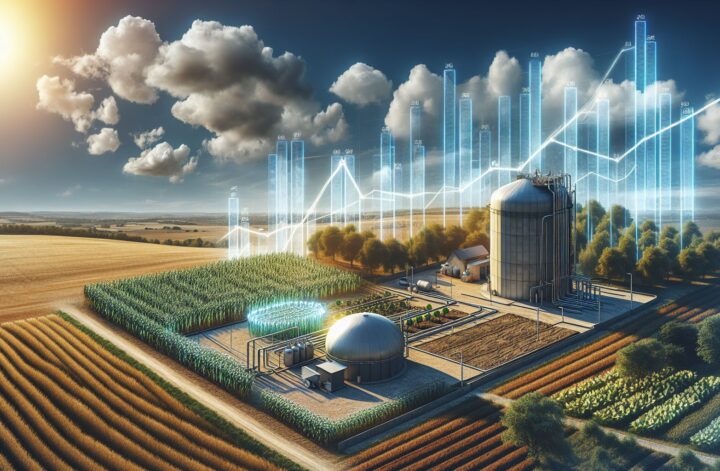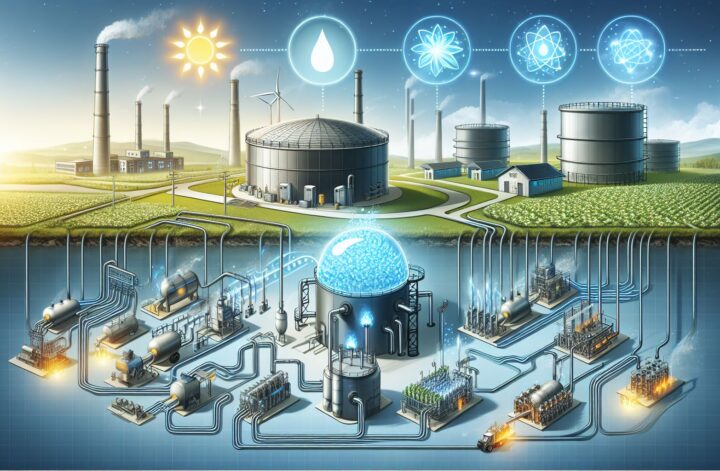Introduction
Biogas production has raised growing interest worldwide as a renewable energy source, especially because it’s generated from organic waste materials. These materials would ordinarily be discarded, but via biogas production, they acquire a second life – one in the service of providing alternative, sustainable energy. The advantages of biogas align with the global drive to reduce reliance on fossil fuels, decrease greenhouse gas emissions and foster waste management methods that are environmentally friendly[^1^].
The Biogas Production Process
Biogas production occurs through a process known as anaerobic digestion. Unlike aerobic processes, which require oxygen, anaerobic digestion happens in the absence of oxygen. The process involves the breakdown of organic matter by micro-organisms, and happens in four key stages: hydrolysis, acidogenesis, acetogenesis and methanogenesis[^2^].
1. Hydrolysis
The hydrolysis stage involves breaking down complex organic materials like proteins, fats and carbohydrates into more simple, soluble molecules. This makes it easier for enzymes excreted by microorganisms to act on the materials. Hydrolysis is an essential step because it allows for the complex organic materials to be converted into more manageable by-products.
2. Acidogenesis
In the acidogenesis phase, acidogenic bacteria act on the soluble products from the hydrolysis stage, further breaking them down into short-chain fatty acids, carbon dioxide, ammonia, hydrogen, and other by-products.
3. Acetogenesis
During acetogenesis, the short-chain fatty acids produced during acidogenesis are converted into acetic acid, carbon dioxide and hydrogen. Microorganisms known as acetogens are responsible for this process.
4. Methanogenesis
In the final stage of biogas production—methanogenesis—methanogenic archaea act on the products of acetogenesis to generate methane (which gives biogas its combustible quality), carbon dioxide and water. Methanogenesis is the step in biogas production that produces the desired end-product[^2^].
Why Biogas Production Is Important
Biogas production impacts energy, the environment, and economics.
Benefit to Energy Resources
Biogas, being a renewable resource, provides a sustainable energy source that does not deplete with use. This is in contrast to fossil fuels, which are finite.
Environmental Impact
The production and use of biogas also have a positive impact on the environment. They reduce the use of non-renewable energies and decrease the amount of methane—a potent greenhouse gas—released into the atmosphere. When organic waste decomposes naturally without anaerobic digestion, it releases methane into the atmosphere. However, utilizing biogas production processes effectively captures this methane, repurposing it into energy[^3^].
Economic Implication
From an economic standpoint, biogas production offers the prospect of creating green jobs, stimulating local economies, and providing a cheaper, local alternative to imported conventional fuels.
Challenges and Opportunities
Despite its benefits, biogas production does come up with several challenges. One key challenge is cost; the initial capital cost for setting up a biogas plant can be hefty. Furthermore, maintaining the plant and ensuring efficient operation also involve costs. Biogas production can also be affected by seasonal variations, which can influence the availability and quality of organic waste used in the process.
However, advancements in technology and increasing recognition about the benefits of biogas have led to significant opportunities. Emerging trends like co-digestion—digesting multiple types of organic wastes together—can increase biogas production capacity and efficiency. Similarly, innovative biogas upgrading techniques are allowing for the production of biomethane—a more versatile and valuable energy product[^3^].
Conclusion
Biogas production holds immense potential as a sustainable energy resource. By utilizing anaerobic digestion, organic waste is converted into a valuable resource while demonstrating environmental responsibility and creating economic benefits. More research into the optimization of this process could help establish biogas as a cornerstone of global renewable energy initiatives.
[^1^]: Developing Countries & Biogas: What You Need To Know
[^2^]: Anaerobic Digestion: Process, Applications and Advantages




